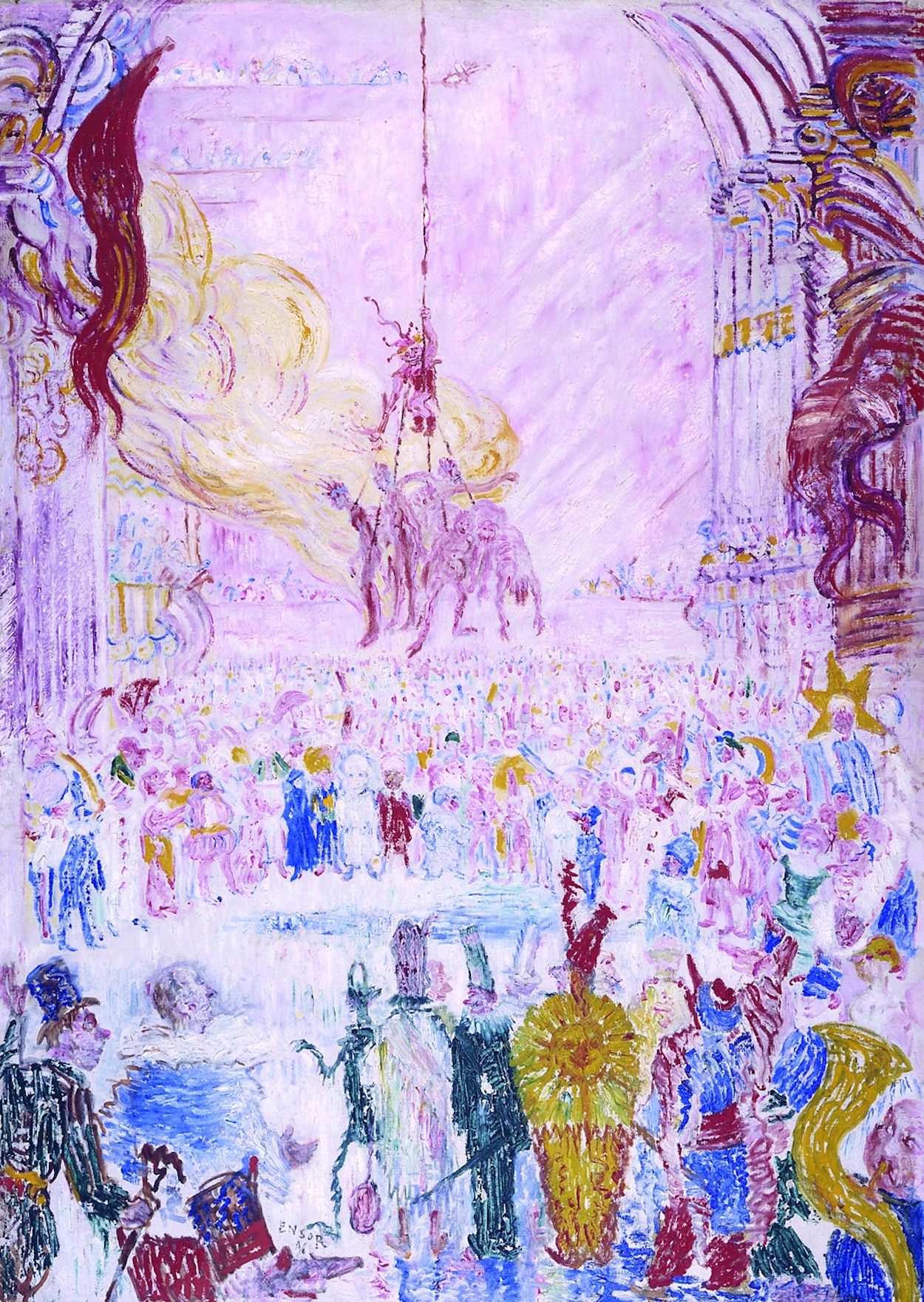On this day in 1860, James Ensor, a Belgian painter and printmaker and an important influence on expressionism and surrealism, was born. His works are often considered to be creepy—but his radical distortion of form, his ambiguous space, his riotous color, his muddled surfaces, and his proclivity for the bizarre anticipated and influenced modernist movements. We present today's piece thanks to our beloved Kröller-Müller Museum in Otterlo. Enjoy!
Tempers flare up in a packed theater: burning apes hang in the air! Here, James Ensor paints the closing scene of the short story Hop-Frog, by Edgar Allan Poe. It celebrates the revenge that the court jester Hop-Frog, a cripple dwarf, exacted upon the corrupt king and his seven ministers.
The jester advises the king and his ministers to attend the masquerade ball disguised as chained apes, for the amusement of the people. At the highpoint of the ball, Hop-Frog hoists the eight figures aloft like a chandelier and sets them alight above the heads of the crowd.
Ensor, a notoriously critical malcontent, satirizes everything that smacks of power: the army, the church, the judges, the ministers. His paintings and drawings contain numerous monsters and masks. In this way, he depicts the fears and threats of his time and the sanctimony and parochialism of the people. In combination with the overwhelming expressiveness of line, light, and color, this painting is a true signature piece for Ensor.
If you would like to learn how the Kröller-Müller Museum experiments with philosophy and art, read the article "How To Tackle Art With Kids: Try Some Philosophy!".


 James Ensor
James Ensor